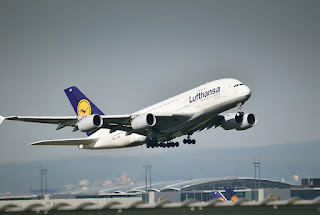The Airbus A380 is the world's largest commercial passenger aircraft, and it has revolutionized air travel since its first flight in 2005. One of the most notable features of this aircraft is its emphasis on passenger comfort. In this article, we will explore the various comforts of flying in the Airbus A380 from a passenger's perspective.
The Airbus A380 is designed to offer passengers a comfortable and enjoyable flying experience, with a spacious cabin that is divided into different classes. First class, business class, premium economy class, and economy class are available on most A380 flights, and each class offers its own set of amenities.
Let's start with the first class cabin. First class passengers on the A380 have access to the most luxurious amenities available on any aircraft. They are provided with a private suite with a fully flat bed, a personal entertainment system, and a dedicated flight attendant. The suites also have a sliding door that offers complete privacy. First class passengers can also enjoy a range of gourmet meals and drinks, including champagne and caviar. The A380's first-class cabin offers an unparalleled level of luxury and comfort.
Next up is the business class cabin. The A380's business class cabin offers passengers a comfortable and spacious seat that can be converted into a fully flat bed. Business class passengers also have access to a personal entertainment system, as well as a range of gourmet meals and drinks. The cabin features a design that maximizes space and offers a high level of privacy for each passenger.
Moving on to the premium economy cabin, which offers passengers a more comfortable and spacious seat than economy class. The seats are wider and have a greater pitch, allowing passengers to recline further and stretch out. The cabin also offers a personal entertainment system and a range of meal and drink options that are a step up from those offered in economy class.
Finally, we have the economy class cabin, which is still a comfortable and enjoyable experience on the A380. The cabin offers a generous amount of legroom, as well as a personal entertainment system with a wide selection of movies, TV shows, and games. Passengers in economy class also have access to a range of meal and drink options.
One of the most notable features of the A380's cabin is its spaciousness. The aircraft is designed to accommodate a large number of passengers, but it never feels cramped or crowded. The cabin's wide aisles and high ceilings create a feeling of openness that is unmatched on other aircraft. The A380's cabin also has advanced lighting systems that can be adjusted to mimic the natural light cycle, helping passengers to adjust to time zone changes and reduce jet lag.
Another comfort feature of the A380 is its advanced air conditioning system. The system is designed to maintain a comfortable cabin temperature and humidity level throughout the flight. It also has advanced air filtration systems that can remove up to 99.9% of airborne bacteria and viruses. This is particularly important in the current global health crisis, where air travel has been impacted by concerns about the spread of infectious diseases.
In conclusion, the Airbus A380 offers passengers an unparalleled level of comfort and luxury. From the spacious and comfortable seating to the advanced air conditioning and filtration systems, every aspect of the A380's design is focused on providing a comfortable and enjoyable flying experience. Whether you're flying first class or economy class, the A380's cabin is sure to impress. If you're looking for the ultimate in passenger comfort, the Airbus A380 is the aircraft for you.








